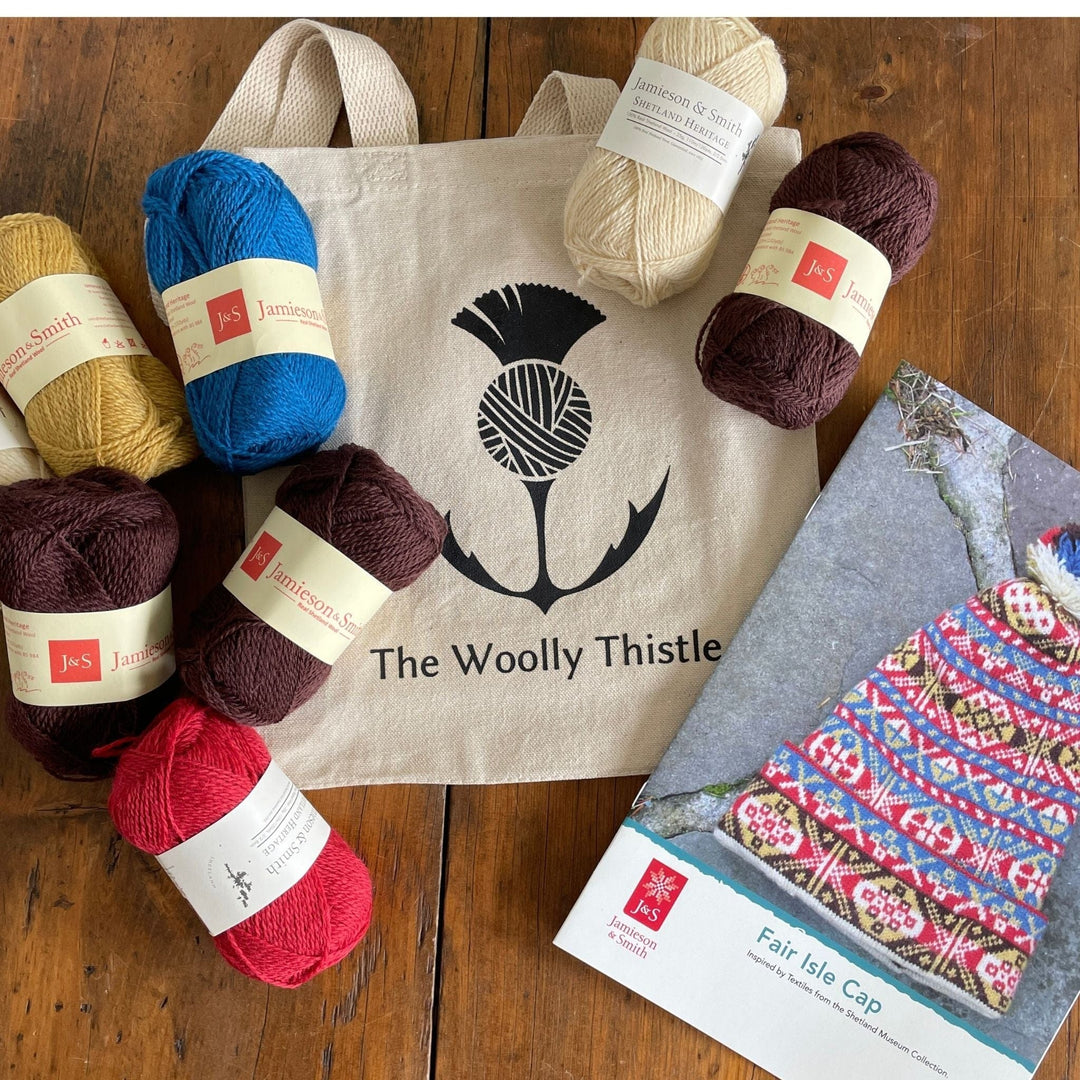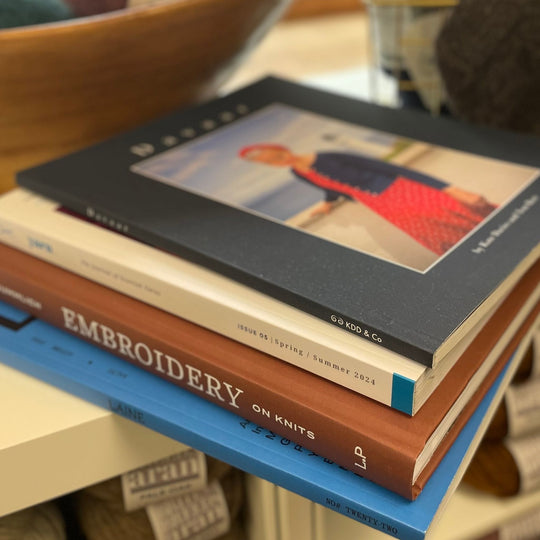
Fair Isle Cap Kit in J&S Heritage
Let us handle the hard part.
Got your eye on something?
We will do the talking for you and (hopefully) you will snag the product you have been eyeing.

Share via Email
Share via SMS
The Fair Isle Cap (or Kep) Kit
Inspired by textiles from the Shetland Museum & Archives Collection, inspiration of Jamieson & Smith's Shetland Heritage range of yarn.- 9 balls of J&S Heritage yarn*
- Print pattern to knit the Fair Isle Cap
- Woolly Thistle tote bag - small
J&S Heritage yarn: Made in UK. 100% Real Shetland Wool.
You will also need: - 1 set 2.75mm (UK 12/US 2) double-pointed needles (DPNs) or your preferred needles for knitting small diameters in the round - Small quantity of waste yarn - preferably a smooth cotton, to avoid felting with the main yarn - 2 pieces of cardboard or a pompom maker
Sizing To fit head circumference 50-55cm/19.75-21.75in Actual hat circumference 53cm/21in Length from brim to crown (with brim folded up) 35cm/13.75in
Gauge 34 sts and 38 rounds = 10cm/4in over Fair Isle pattern in the round, using 2.75mm needles 32 sts and 44 rounds = 10cm/4in over stocking stitch in the round, using 2.75mm needles
Excerpt taken from Debra Pulliam's paper on Origins of Fair Isle Knitting:
The earliest objects of “Fair Isle” knitting in the Shetland Museum are two caps that date to the 1860s. The National Museum of Scotland has similar early Fair Isle pieces dating to the 1850s. Both caps in the Shetland Museum; one for a man and one for a woman, are handspun and naturally dyed, and have been used. The man’s cap is knit in the same way as a Scandinavian “dubbelmossa”; that is to say, the lining is knit in one piece with the main cap, and so when the brim is folded up, there are four layers of material over the ears. The knitter was skilled enough to work the design where it was needed, for the turned-up brim, but knit the rest in plain white yarn, saving the dyed yarn for where it is visible. This type is known as a “haaf” cap in Shetland, which indicates an off-shore fisherman’s cap. Most Fair Isle and Shetland knitters will tell you this is the older style cap, which predates the tam o’shanter style. Similar style doubled caps are found throughout Europe, beginning in the late eighteenth century.
*please note that older copies of the pattern only call for 1 ball of Auld Gold, J&S has updated the pattern to include 2 balls of Auld Gold.























